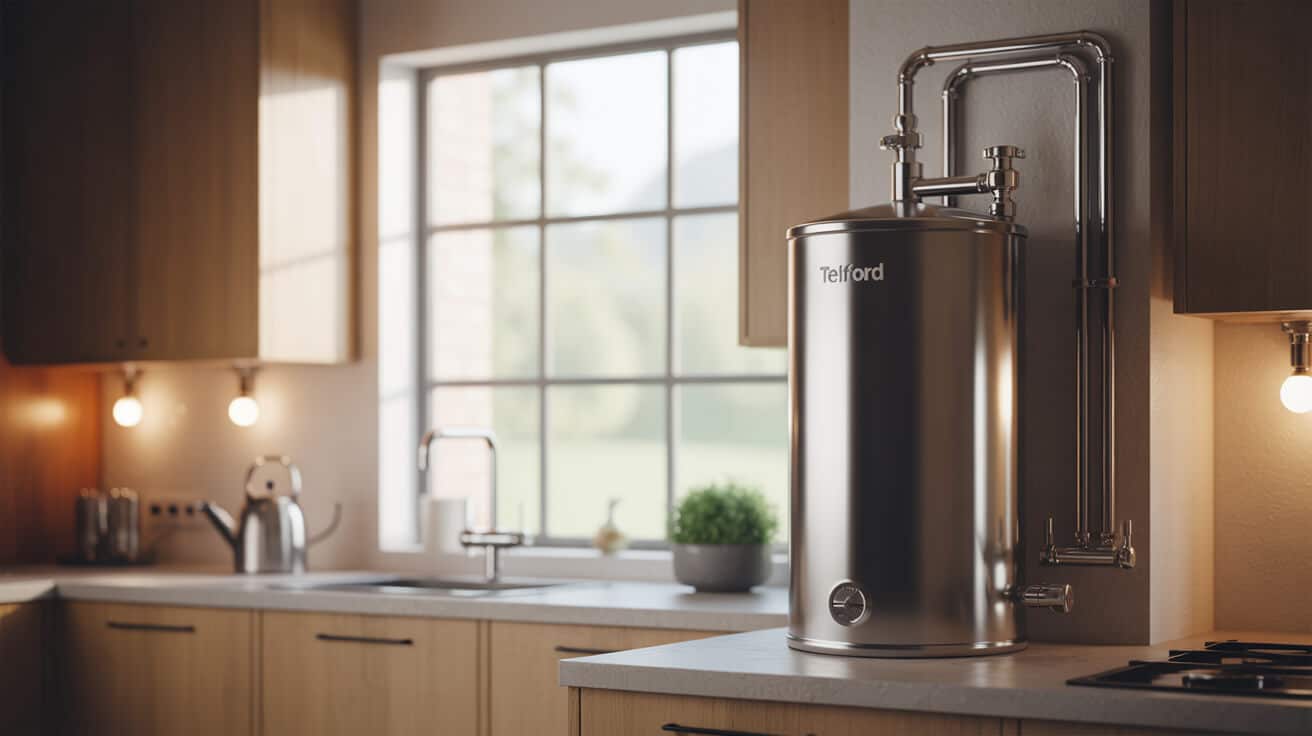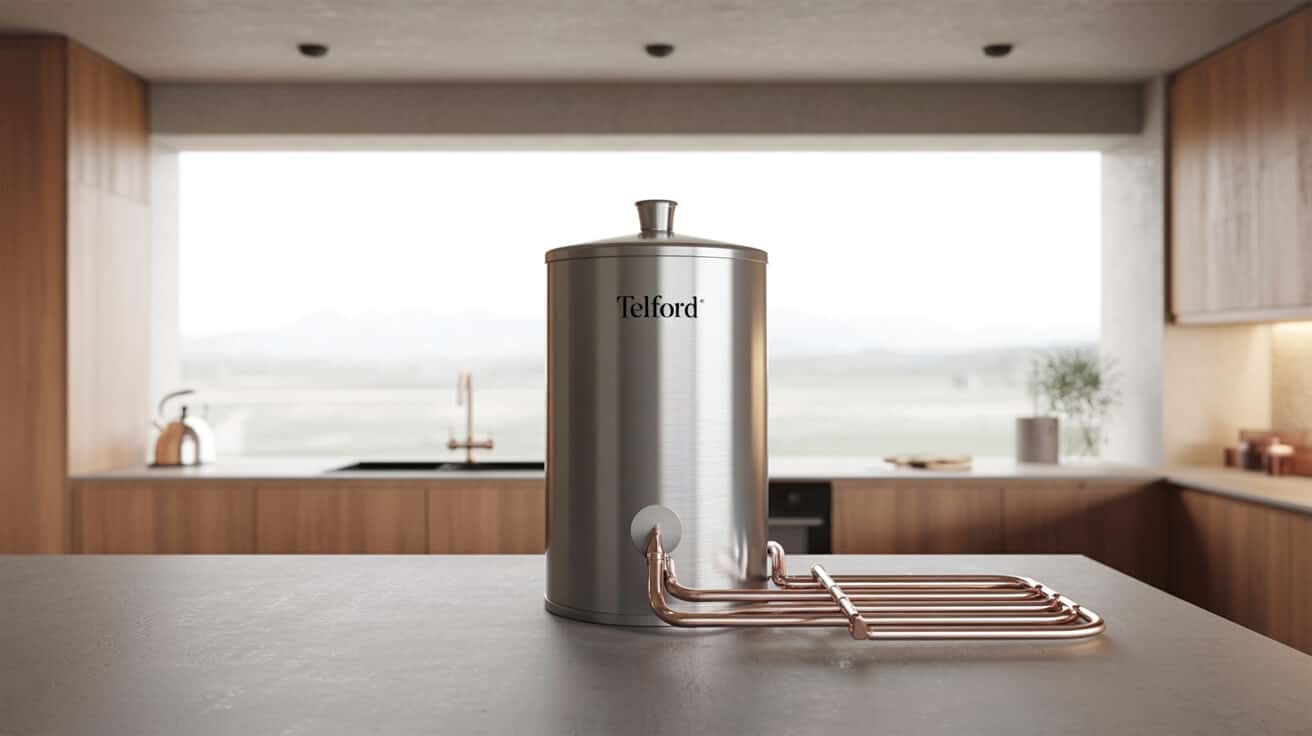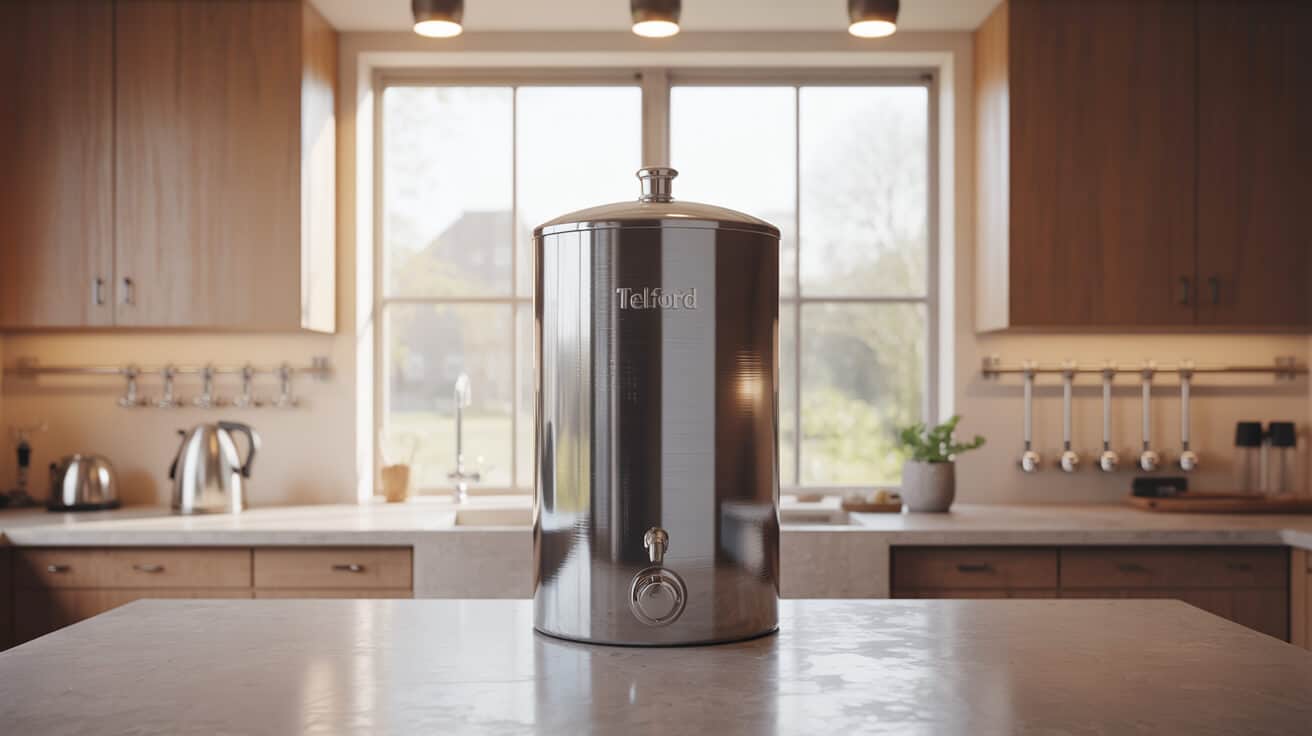Engineered in compliance with British standards, Telford hot water cylinders bridge legacy and contemporary plumbing systems, supporting installation in everything from compact apartments to multi-storey commercial properties. Their design philosophy emphasises durability through materials like stainless steel or high-grade copper, energy conservation via thick polyurethane insulation, and risk management using certified safety features. Installation supports integration with a range of heat sources and water delivery systems, directly impacting comfort, utility costs, and regulatory compliance within UK buildings.
These cylinders find routine specification for both new construction and retrofit projects due to their adaptability to high-pressure and gravity-fed systems, precise sizing options, and compatibility with decarbonization initiatives. Leading installation professionals, including Plumbers 4U, often recommend Telford cylinders to achieve optimal long-term performance, warranty support, and assurance of regulatory adherence for your property, business, or organisation.
Etymology or name origin
The designation “Telford” references the manufacturing company, which draws its identity from the town of Telford in Shropshire—a name historically associated with British industrial advancement and reliability. The phrase “hot water cylinder” has become the de facto term in UK plumbing and heating, standardising reference to domestic and commercial hot water storage devices since the mid-twentieth century. This linguistic evolution followed the transition from basic open tanks to controlled, pressure-safe sealed vessels required by modern building and safety codes.
Overview and context
Modern hot water cylinders, including those produced by Telford, are central storage elements within plumbing and heating systems. Their function is to accumulate, insulate, and deliver hot water at regulated temperatures and flow rates for tasks such as heating, bathing, and sanitation. In the United Kingdom, these cylinders are designed for both new build and retrofit applications, working equally well in gravity-fed or unvented (mains-pressure) systems.
Telford models are notable for their flexibility in diverse markets—serving homes, flats, care facilities, hotels, schools, and offices—while meeting the operational demands and legal expectations for water safety, hygiene, and energy efficiency. The company’s product range responds to the nuanced demands of property managers, landlords, homeowners, and facilities directors, who value not only reliability and efficiency but also the reduced risk profiles associated with rigorously tested and certified storage solutions. As a result, Telford hot water cylinders are now frequently specified for compliance-driven residential, commercial, and institutional projects.
History
Origins and early development
Early domestic hot water provision in Britain involved simple open tanks or direct-fired baths, transitioning to sealed copper cylinders with limited insulation following the spread of indoor plumbing in the nineteenth and early twentieth centuries. These rudimentary devices were prone to rapid heat loss, leaks, and pressure-related failures.
Industrial emergence
With the post-war expansion of central heating and the adoption of standardised water supply pressures, British manufacturing firms—including Telford—began innovating with thicker-walled copper, factory insulation, and enhanced weld strength. By the 1970s, increasing regulatory oversight resulted in the widespread use of pressure relief valves and temperature controls, and British Standards began dictating minimum safety features and performance benchmarks.
Contemporary evolution
From the 1980s onward, stainless steel emerged as a dominant material due to improved corrosion resistance and strength-to-weight ratio. Large-scale landlords, asset managers, and facilities directors introduced formalised service schedules and failure tracking for plant rooms and hot water assets. The new focus on energy conservation, EPC improvement, and ErP energy labelling led manufacturers—including Telford—to develop more thermally efficient, slimline, and modular cylinder systems, incorporating advanced safety valves, solar and heat pump compatibility, and smart thermostatic controls.
Telford’s manufacturing evolved to accommodate builder and engineer requirements for rapid installation, robust servicing access, and pre-plumbing, while UK legislation increased requirements for qualified installers and formal commissioning documents.

Concept and description
A Telford hot water cylinder is constructed as a pressure-rated vessel, internally lined and externally insulated, to retain heat and withstand the fluctuations experienced during water heating and withdrawal. Its operating principle combines hydraulic storage, thermal insulation, and safety monitoring to supply hot water at stable flow rates and safe temperatures throughout a building.
Physical structure and materials
Most unvented Telford cylinders use stainless steel—a material chosen for corrosion and mechanical resistance—while vented options can be fabricated from copper, valued for thermal conductivity and historical repair familiarity. Polyurethane foam insulation encases the vessel, minimising heat dissipation and complying with ErP standards for standing heat loss. The product geometry adapts to the demands of available space, with tall, slimline, and horizontal models in the range.
Critical components
- Expansion vessel: Compensates for thermal expansion in unvented models; typically wall-mounted nearby.
- Temperature and Pressure Relief Valve (TPRV): Calibrated to relieve system pressure and mitigate overheating scenarios.
- Immersion heaters: One or more electric elements, often fitted as both primary and backup heat sources; offer redundancy in power outages or boiler faults.
- Indirect heating coil: For cylinders paired with boilers or renewable energy sources; transfers heat via internal looped tubing.
- Tundish: Transparent outlet for safety valve discharge, providing a visible cue to users or maintenance staff in case of fault.
- Thermostat(s): Monitor and regulate water temperature to suit usage and minimise scalding risk.
Siting and mounting considerations
Installers must account for access to mains inlets, cold water feeds, safety discharge pipe runs (to a safe, visible location), and future maintenance visits. Requirements for minimum clearances and compliance with G3 of the Building Regulations necessitate careful planning and may influence hot water storage placement, particularly in multi-residential or high-rise buildings.
Thermal performance and energy conservation
Cylinder insulation thickness, vessel volume relative to demand, and optimised hydraulic pathways (such as secondary returns) all contribute to efficiency and comfort. Table 1 illustrates standard cylinder heat loss values as published by selected manufacturers.
| Capacity (litres) | Typical Standing Heat Loss (kWh/24h) |
|---|---|
| 120 | 1.36 |
| 150 | 1.43 |
| 180 | 1.59 |
| 210 | 1.67 |
Functionality, purpose, and applications
A Telford hot water cylinder stores, insulates, and centrally distributes hot water to your bathrooms, kitchens, or radiators, depending on building layout and intended usage. Device operation is either direct—using immersion heaters as the sole heat source—or indirect, where heating coils connect to external energy systems, including boilers, solar panels, or heat pumps. The flexibility of this product family accommodates varied user requirements and installation environments.
Practical use
Systems engineered with a Telford cylinder can:
- Sustain high-pressure delivery at multiple outlets without flow reduction
- Support shower, bath, and cleaning operations concurrently within a property
- Minimise cold or tepid water surprises caused by demand spikes or system lag
- Lower ongoing energy expenditure through optimised insulation and control strategies
- Assist in securing regulatory sign-off and warranty activation via proper documentation
Commercial and institutional deployment
For public-sector and commercial installations, special attention is paid to instal locations that minimise piping runs, serve multi-zone layouts, and allow remote monitoring or management. Plumbers 4U frequently coordinates with facilities directors to ensure compliance and system resilience, especially in care homes, schools, and multi-dwelling schemes.
Renewable energy compatibility
By selecting twin-coil and solar-ready Telford models, your company or organisation can integrate low-carbon heat sources, access financial incentives, and future-proof assets for upcoming efficiency regulations or corporate responsibility initiatives.
Classifications, types, and variants
Product lines are organised by:
- Unvented cylinders: Sealed, mains-pressure operation, necessary expansion and discharge vessels, typically specified for modern properties and high-performance renovations.
- Vented cylinders: Open to atmospheric pressure, with gravity-fed cold water tank.
- Direct heating cylinders: Employ immersed electrical heating.
- Indirect heating cylinders: Heat exchange via internal coils, interacting with boilers or renewable sources.
- Solar-compatible/twin coil: Two or more heat exchanger coils, supporting integration of solar thermal or dual-boiler systems.
- Heat pump compatible: Lower-temperature coils for efficient heat transfer.
- Buffer/storage tanks: Facilitate hydraulic separation in high-demand or district heating networks.
- Horizontal/special format: Suited to loft, vault, or constrained spaces.
Model selection matrix example
| Type | Typical Application | Pros | Cons |
|---|---|---|---|
| Unvented | Newbuild, upgrades | High pressure, safe | Requires qualified instal |
| Vented | Retrofitting older | Simple tools, cheap | Lower pressure |
| Twin Coil | Solar/heat pump | Multi energy input | More pipework/commission |
| Direct | Electric-only sites | Simple, fast | High power use |
| Buffer | Large/variable demand | System flexibility | Bulky, complex |
Model selection involves consulting property demand calculations, outlet count, occupancy patterns, and future energy plans.
Systems, tools, and methodologies
Installation workflow
- Assessment of property hydraulic profile and hot water demands
- Selection of cylinder variant, size, and positioning, considering future maintenance
- Pre-instal check: dimensions, access, pipe routing, removal of legacy unit if required
- Isolation of existing systems and main water supply
- Plumbing and electrical preparation, incorporating correct jointing, support, and pressure-control valves
- Cylinder placement and secure mounting per instructions
- Integration of expansion vessel, safety discharge pipework, and thermostatic controls
- Commissioning flush, pressure test, and Benchmark logbook initiation
- User handover, warranty registration, and aftercare schedule setup
Routine tools
- Pipe cutters and deburrers (copper/plastic)
- Press-fit tools for leak-resistant joins
- Immersion heater spanners and vessel valves
- Tundish sight glasses and discharge test units
- Stat/tester for thermostatic calibration
- Megohm metres for element continuity
Methodologies
Experienced installers adhere to strict isolation, pressure, and discharge compliance, using phased fill-and-test approaches and thorough pipe lagging for efficiency. Plumbers 4U maintains industry best practices by validating every joint, measuring standing heat loss, and registering installations with scheme providers, protecting your interests and asset value.

Stakeholders and entities involved
- Manufacturers: Innovation, warranty, and supply chain logistics
- UK regulatory agencies: WRAS, Gas Safe, local authority Building Control—oversee safety, potable standards, and documentation protocols
- Landlords/property managers: Asset selection, regular maintenance, and legal compliance
- Facility engineers: Installation coordination, performance optimization, and emergency response
- Installers and service providers (including Plumbers 4U): Direct client engagement, technical competence, and follow-up support for you and your organisation
Your needs as a user, property manager, or service buyer are directly represented through specialist support structures, ensuring long-term satisfactory performance.
Legal, regulatory, and ethical considerations
Building and installation regulations
- Building Regulations Part G (sanitation): Defines output temperatures, safe installation sites, and system volume rules.
- G3 controls: Mandate installer competency and notification; only G3-certified engineers are authorised to commission unvented systems.
- WRAS (Water Regulations Advisory Scheme): Sets standards for approved materials, backflow risk, and potable water integrity.
Ethical and risk perspectives
Controls and documentation protect your household or organisation against water contamination, scalding, or property damage caused by unlicensed work. Insurers and warranty providers now require proper commissioning and documented maintenance for cover. Landlords face additional scrutiny under tenant safety rules and duties of care.
Maintenance records
Maintaining a correct service log via Benchmark or manufacturer protocol is vital for preserving warranty and your compliance status, especially across multi-unit or commercial sites.
Performance metrics, data, and measurements
Critical attributes impacting your asset value, return on investment, or well-being:
- Standing heat loss in kWh/24h: Reflects retained energy and operational cost.
- Hot water recovery rate: Time to restore set temperature post-draw.
- Working and test pressures: Maximum tolerances, with safety factors for system resilience.
- System volume per occupant or room: Drives sizing and utility.
- EPC ratings: Calculated by integrating cylinder efficiency into overall property performance.
Example performance matrix
| Attribute | Value Range | Relevance |
|---|---|---|
| Standing loss | 1.2-1.7kWh/24h | Monthly bill reduction |
| Working pressure | 2.5–3.5 bar | System compatibility |
| Reheat time | 25–45 min (180L) | User availability, convenience |
| Lifespan (avg) | 15+ years (serviced) | Asset longevity, resale value |
Assessing these metrics for your specific scenario is essential for correct system specification and operational planning.
Challenges, barriers, and limitations
Operational and technical issues
- Space limitations: Constraining new build or retrofit deployments; horizontal variants mitigate some issues.
- Legacy integration: Older piping or low-pressure mains may require upgrades or pressure-boosting.
- Limescale accumulation: Impairs element efficiency and reduces overall performance, especially in hard water regions.
- Access for maintenance: Inaccessible locations increase ongoing cost and reduce warranty support.
Social and economic factors
- Installation cost: May deter upgrades without support from grants or green finance; growing awareness of lifetime savings can offset perceptions.
- Disruption: Both domestic and business settings must prepare for temporary shutdowns during upgrades or fault repairs.
- Regulatory literacy: Property professionals must stay informed on evolving legislation to protect organisational interests.
Market factors
- Supply chain risks: Delays or shortages can impact schedules.
- Warranty claim pitfalls: Non-compliance or missed service intervals can rapidly void coverage.
Impact, influence, and legacy
Telford cylinders support advances in building energy performance and safety, with adoption accelerating in the wake of increased property standardisation and retrofit demand. Their presence in trusted government, social housing, and educational environments evidences continuous investment in product testing, aftercare, and installer training. Building professional organisations and national asset managers recognise the longevity, part interchangeability, and traceability features that lower whole-life asset management costs for your properties.
Future directions, cultural relevance, and design discourse
Anticipated developments include advances in vacuum or phase-change insulation, thermal stratification management, real-time digital diagnostics for predictive maintenance, and integration with building automation systems. User engagement trends express preference for transparent performance data, flexible capacities, and clear servicing obligations, shaping both specification documents and end-user behaviour. Current design discourse addresses how to reconcile fast installation and low-carbon demands with robust, accident-resistant construction. UK government policy points toward an expanded role for certified, energy-efficient cylinders in achieving decarbonization and modernization roadmaps for social and commercial building stock.

